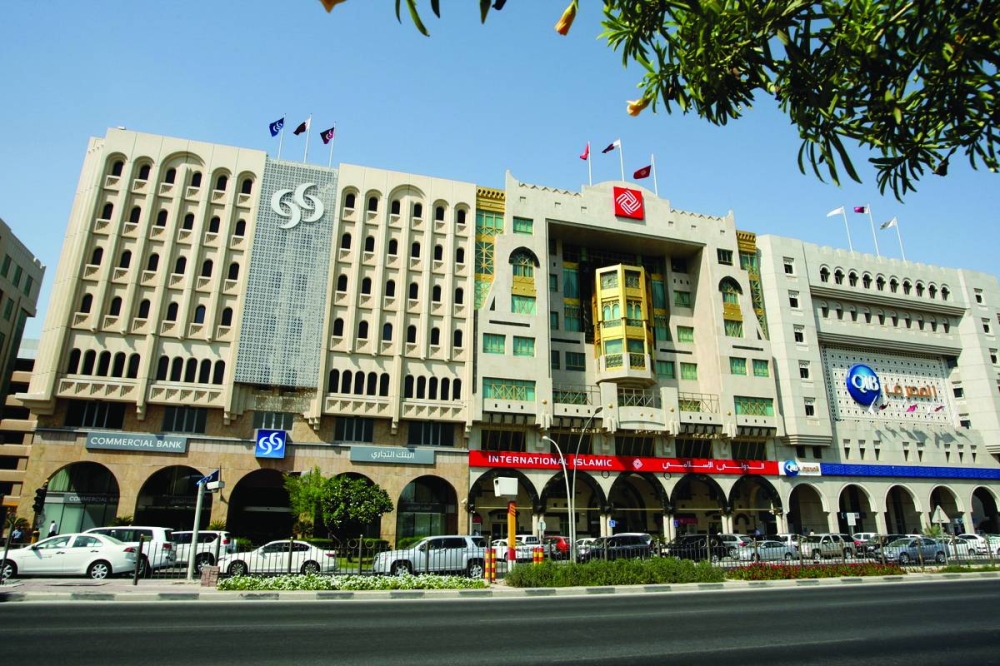Qatari banks’ net earnings grew in 2022, driven by widening net interest margins and higher non-interest income, according to Moody's, an international credit rating agency.
Moreover, the banks saw improved operating efficiency and their capital levels remain strong, even as loan-loss provisioning increased and is likely to remain elevated, Moody's said in a report.
Qatari banks' combined net profit rose 8% for 2022 to QR23.4bn, as higher operating income more than offset a jump in provisioning costs. This performance factored in hyperinflationary accounting adjustments linked to Turkiye for two Qatari banks that have subsidiaries there.
"Net profit growth was consistent across the banks (except one bank) largely because of an 18% increase in net interest income and 11% growth in noninterest income such as fees and commissions," it said.
Finding that Qatari banks' operating income grew by 13% during 2022, supported by a rise in both net interest income and noninterest income; Moody's said the interest rate environment reversed in 2022, driving aggregate growth of 18% in banks' net interest income.
The growth reflected increasing asset yields, driven by rising interest rates, which more than offset higher funding costs, it said, adding while the banks' funding costs increased, they did not do so at the same rate. As a result, the banks' combined net interest margin rose to 2.3% from 2.1% a year earlier.
"We expect margins to face modest pressure particularly in a scenario of rising global rates and banks being unable to reprice loans. Despite margin pressure, likely modest credit growth in 2023 of around 5% would support net interest income," it said.
Highlighting that cost efficiency is strength and improved further; the rating agency said the banks continued to improve their operating efficiency during 2022 as income growth surpassed expenses growth.
While the benefits of the cost control measures initiated during the pandemic accrued fully in 2021, aggregate operating expenses for the Qatari banking sector increased by 6% during 2022 and were almost at the same level as in 2019.
Despite the modest increase in aggregate costs, the cost-to-income ratio for the rated banks fell to 22% during 2022 from 24% a year earlier and 25% for 2020.
Moody's said the banks maintained their capital buffers during the year, supported by strong earnings and solid profit retention.
Their combined tangible common equity remained broadly stable at a high 16% of total risk-weighted assets as of December 2022. "We expect solid profitability and modest credit growth to support capital buffers at the current high levels during 2023," it said.
On loan-loss provisioning, the rating agency said the provisioning charges increased by 13% during 2022 and consumed around 33.1% of pre-provision income, compared with 35% in 2021 and 20% in 2019.
The increase was primarily because of a jump in both Stage 2 and 3 loan balances as the banks' domestic operations continued to feel the effects of the Covid-19 disruption.
The increase in provisioning costs was driven by an increase in both the nonperforming loan (NPL) ratio and increase in Stage 2 balances, with the aggregate problem loans ratio rising to 2.9% of total loans as of December 2022 from 2.2% as of December 2021.
"We expect asset quality to weaken modestly as loans continue to migrate from Stage 1 to Stage 2 and to some extent Stage 3 during 2023," it said.
Business
Qatari banks record higher net earnings, improved efficiency in 2022; capital level remains strong: Moody's

Qatari banks' combined net profit rose 8% for 2022 to QR23.4bn, as higher operating income more than offset a jump in provisioning costs.

